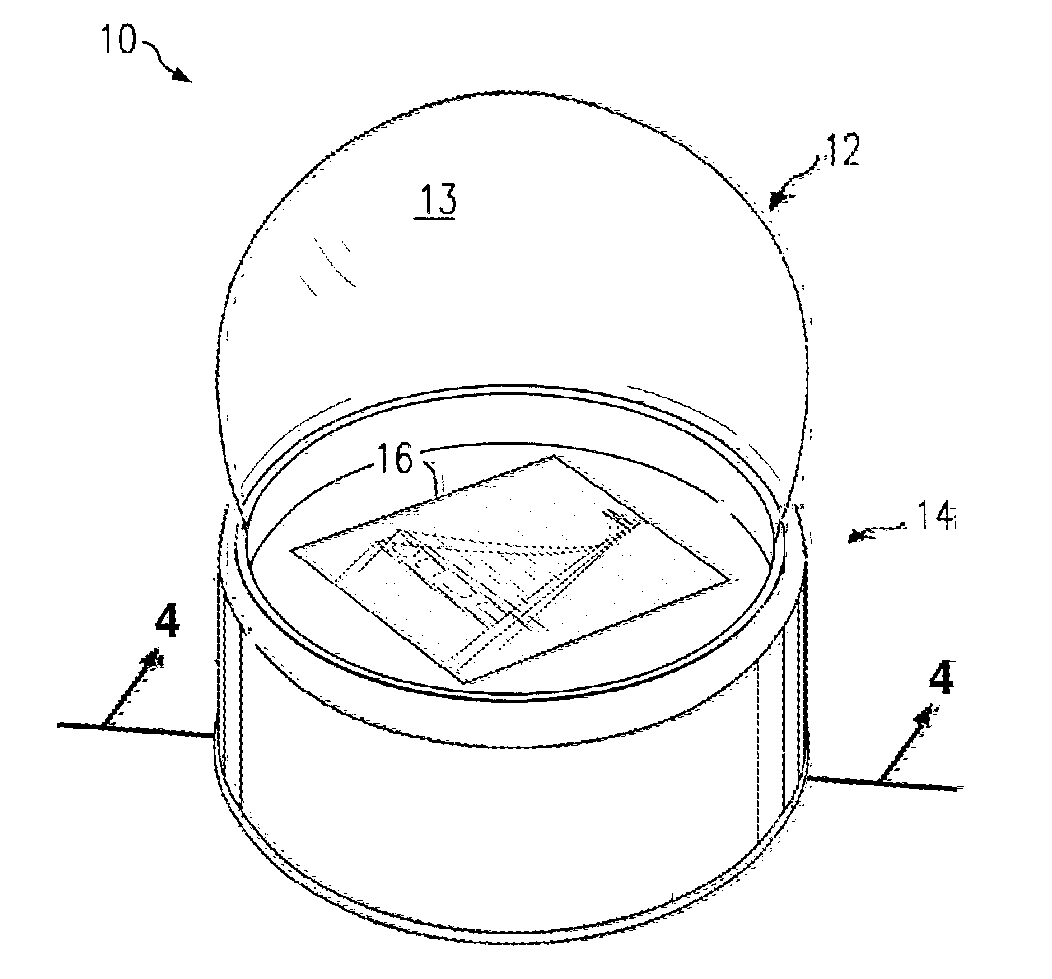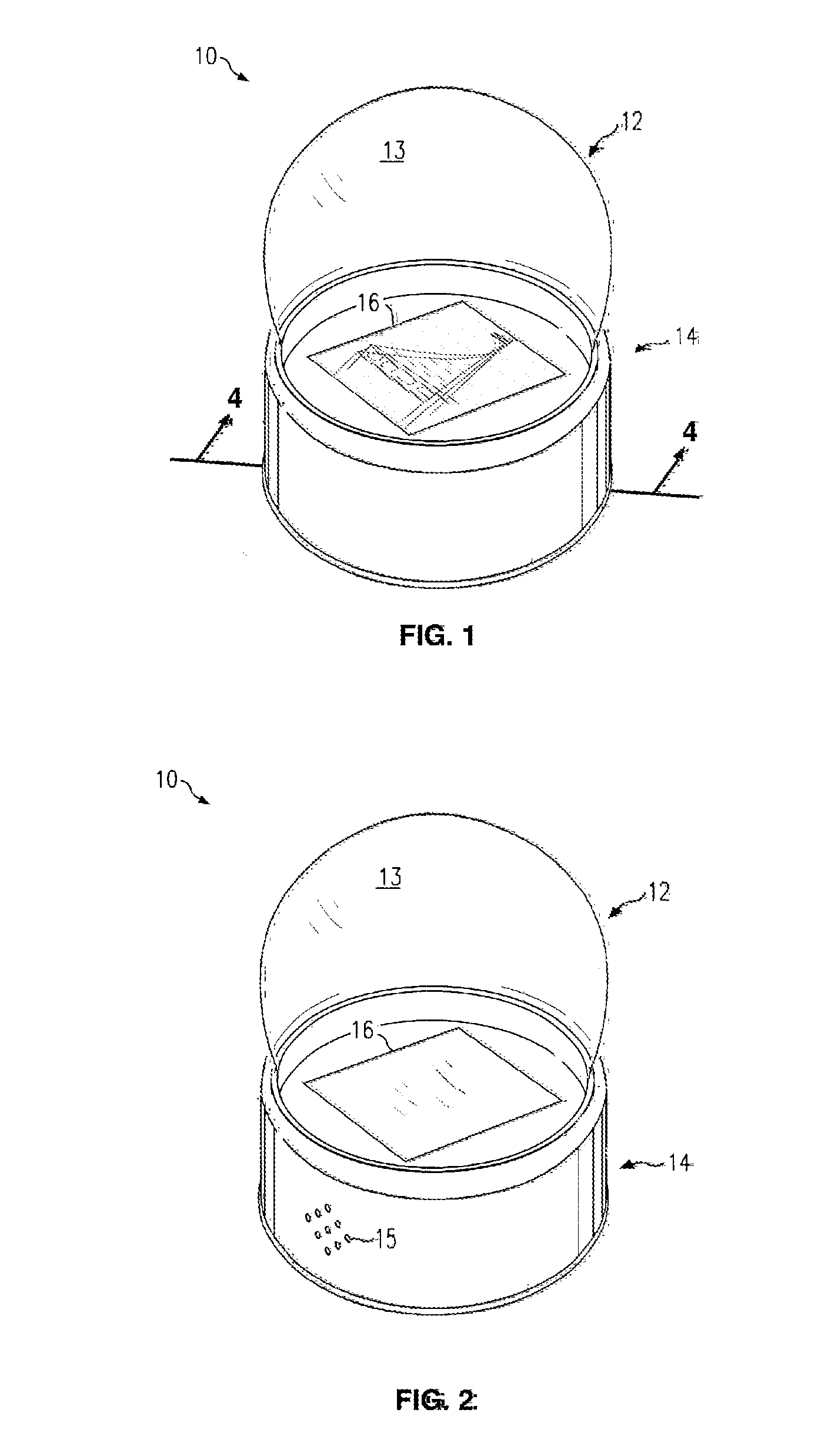Apparatus for Electronic Presentation of Time-Varying Digital Imagery With or Without Accompanying Audio Under a Transparent or Translucent Form in Response to Sensor Data
- Summary
- Abstract
- Description
- Claims
- Application Information
AI Technical Summary
Benefits of technology
Problems solved by technology
Method used
Image
Examples
Embodiment Construction
FIGS. 1, 2, 3, 4, 5, 6 of the Preferred Embodiment
[0035]While the making and using of various embodiments of the present invention are discussed in detail below, it should be appreciated that the present invention provides many applicable inventive concepts which can be embodied in a wide variety of specific contexts. The specific embodiments discussed herein are merely illustrative of specific ways to make and use the invention, and do not delimit the scope of the invention.
[0036]To better understand the invention, reference is made to FIG. 1, which depicts an electronic fluid-filled globe or crystal ball display system 10 in accordance with the preferred embodiment of the present invention. The globe or crystal ball display system 10 comprises a support base assembly 14 and an OLED video display 16, which is mounted to the support base assembly 14. The OLED video display 16 may display video imagery of a figure, landscape, scene, or artwork, for example. The OLED video display 16 ...
PUM
 Login to View More
Login to View More Abstract
Description
Claims
Application Information
 Login to View More
Login to View More - R&D
- Intellectual Property
- Life Sciences
- Materials
- Tech Scout
- Unparalleled Data Quality
- Higher Quality Content
- 60% Fewer Hallucinations
Browse by: Latest US Patents, China's latest patents, Technical Efficacy Thesaurus, Application Domain, Technology Topic, Popular Technical Reports.
© 2025 PatSnap. All rights reserved.Legal|Privacy policy|Modern Slavery Act Transparency Statement|Sitemap|About US| Contact US: help@patsnap.com



